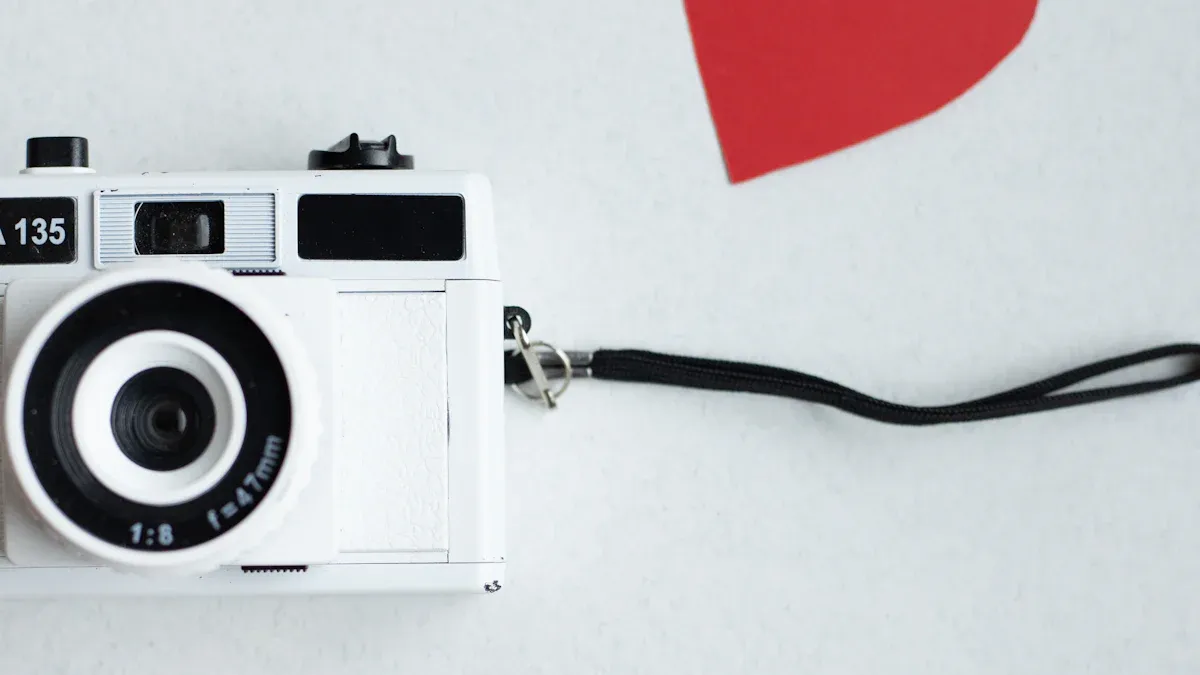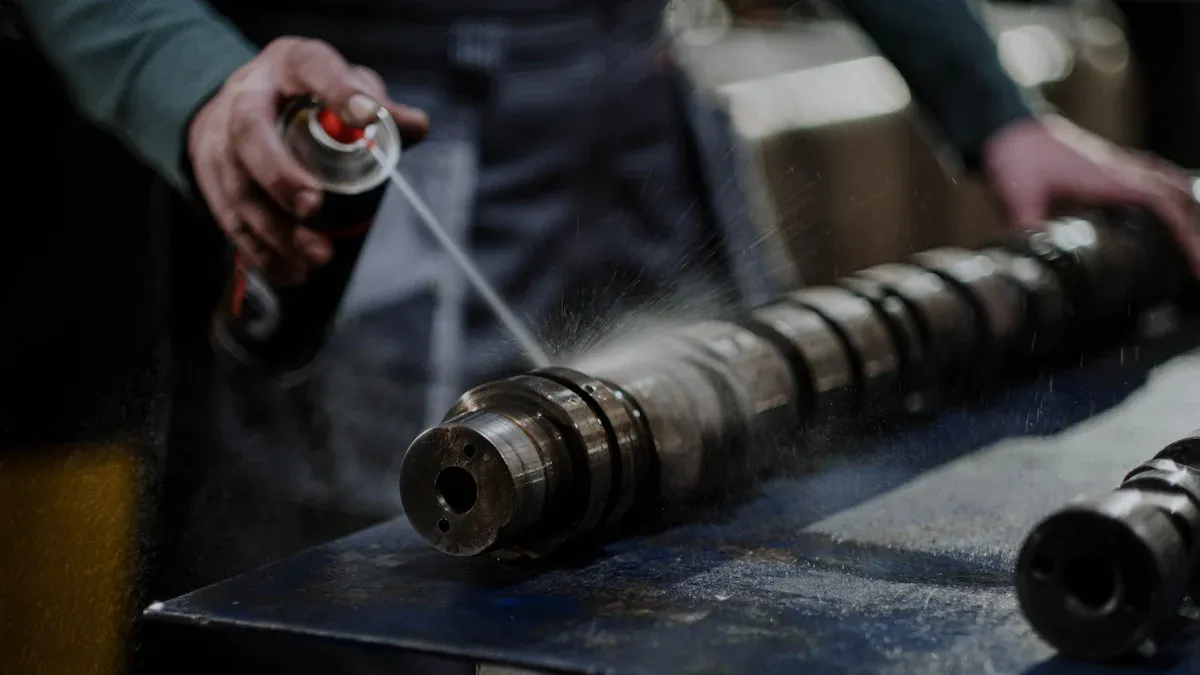Why Regular Sealing and O-Ring Checks Are Crucial for Waterproof Flashlights

Waterproof flashlights, such as the Helius flashlight, depend on a watertight seal to block water from entering internal components. O-rings, made from materials like silicone, fluorine, or nitrile rubber, play a critical role in this process. These materials offer durability and resistance to wear, ensuring reliability. Regular checks help maintain the watertight seal and extend your Helius flashlight’s lifespan.
Material | Temperature Range | Key Properties |
|---|---|---|
-70℃ to +260℃ | Excellent ozone resistance, aging resistance, wear resistance, oil resistance. | |
Fluorine Rubber | -30℃ to +250℃ | High temperature resistance, resistant to oxidants, oil, acid, and alkali. |
Nitrile Rubber | -25℃ to +100℃ | Good resistance to oil, water, and solvents; anti-wear and anti-elongation. |
Key Takeaways
Check O-rings and seals often for damage. Watch for cracks or stiffness to stop water leaks.
Wipe and grease O-rings with silicone grease. This helps them seal better and last longer.
Change broken O-rings quickly. This keeps them waterproof and avoids expensive fixes.
The Importance of Sealing and O-Rings in Waterproof Flashlights

How O-Rings and Seals Create a Watertight Seal
O-rings and seals are essential for creating a watertight seal in waterproof flashlights. These rubber components act as barriers, preventing moisture and liquid from entering the flashlight's internal mechanisms. The material used for O-rings, such as silicone or nitrile rubber, offers varying levels of water vapor resistance, ensuring the flashlight remains functional in wet conditions.
Rubber rings block water ingress, protecting sensitive internal components.
The seal ensures the flashlight operates reliably, even in moist or submerged environments.
Different rubber materials provide unique properties, enhancing the watertight seal's effectiveness.
The engineering behind O-rings also plays a significant role. For example, they perform well under high pressure, provided the design ensures proper preload across the seal. Additionally, their ability to withstand extreme temperatures makes them indispensable for waterproof flashlights.
Why Waterproof Flashlights Depend on These Components
Waterproof flashlights rely on O-rings and seals to maintain their water resistance. Without these components, water could easily penetrate the casing, leading to internal damage. Unlike water-resistant flashlights, waterproof models undergo rigorous testing, such as IP rating evaluations, to ensure they can withstand immersion and harsh conditions.
The IP rating system measures a flashlight's ability to resist water and dust. For instance, an IP67-rated flashlight can endure immersion in water up to one meter for 30 minutes. This level of protection is only possible due to the precise sealing mechanisms, including O-rings.
Common Issues That Affect O-Ring Durability
Environmental factors often impact the durability of O-rings in waterproof flashlights. Extreme temperatures can cause brittleness or softening, compromising the watertight seal. Additionally, lubricants may thicken in cold conditions, affecting the flashlight's performance.
Environmental Factor | Effect on O-rings |
|---|---|
O-rings may become brittle, affecting waterproofing. | |
Softening in High Temperatures | O-rings may soften, impacting structural integrity. |
Viscosity Changes | Lubricants may thicken in cold, affecting operation. |
Proper maintenance, such as cleaning and lubricating O-rings, can mitigate these issues and ensure the flashlight's reliability.
Risks of Neglecting Sealing and O-Ring Maintenance
Water Damage and Internal Corrosion
Failing to maintain the seals and O-rings in waterproof flashlights can lead to water ingress. Once water enters the flashlight, it can damage internal components, such as the circuit board and battery. This damage often results in corrosion, which compromises the flashlight's performance and lifespan. Corroded parts may cause flickering, reduced brightness, or complete failure.
Water ingress also poses a safety risk. In emergencies, you rely on your flashlight to function in wet conditions. A compromised seal can render it useless when you need it most. Regularly inspecting and maintaining O-rings prevents these issues, ensuring your flashlight remains dependable in any situation.
Loss of Waterproof Functionality in Flashlights
When O-rings wear out or seals degrade, waterproof flashlights lose their water resistance. This loss impacts their overall performance in several ways:
They may fail to maintain consistent brightness in rain, snow, or fog.
Their durability decreases, making them more prone to damage from drops or impacts.
In emergencies, they may stop working in flooded areas or heavy rain, reducing safety and preparedness.
By addressing these issues early, you can preserve the flashlight's waterproof capabilities and ensure it performs reliably in harsh conditions.
Increased Costs Due to Repairs or Replacements
Neglecting O-ring maintenance can lead to costly repairs or even the need to replace your flashlight entirely. Worn O-rings and degraded seals often result in leaks, which damage internal components beyond repair. Replacing these parts or buying a new flashlight is far more expensive than performing routine maintenance.
To avoid these costs, you should replace worn O-rings promptly and apply a specialized waterproof lubricant to enhance their sealing capabilities. Additionally, check that all seals and joints are secure to prevent water ingress. These simple steps can save you money and extend the life of your waterproof flashlight.
Practical Tips for Maintaining a Watertight Seal

Inspecting O-Rings and Seals for Wear and Tear
Regular inspection of O-rings and seals is essential for maintaining the water resistance of waterproof flashlights. You should carefully examine these components for signs of wear, such as cracks, brittleness, or deformation. Damaged O-rings can compromise the watertight seal, allowing water to seep into the flashlight and damage its internal components.
To inspect effectively:
Remove the O-rings and clean them with a lint-free cloth to check for hidden damage.
Look for any debris or dirt that might interfere with the seal's performance.
Ensure the O-rings fit snugly in their grooves without any gaps.
By identifying wear early, you can prevent costly repairs and extend the lifespan of your flashlight.
Cleaning and Lubricating O-Rings with Silicone Grease
Proper cleaning and lubrication of O-rings enhance their sealing capabilities and prolong their life. Silicone grease is the preferred lubricant for waterproof flashlights due to its effectiveness and compatibility with rubber materials.
To clean and lubricate O-rings:
Remove the O-rings and clean them with a mild soap solution. Rinse thoroughly and dry with a soft cloth.
Apply a thin, even coat of silicone grease using clean hands or a dive-safe applicator.
Ensure the lubricant is compatible with the O-ring material and rated for the conditions your flashlight will face, such as depth or water temperature.
Using products like Super Lube O-Ring Silicone Lubricant can further enhance the O-ring's resistance to damage and maintain the flashlight's waterproof functionality.
Replacing Damaged O-Rings to Restore Waterproofing
When O-rings show significant wear or damage, replacing them is the only way to restore the flashlight's watertight seal. Neglecting this step can lead to water ingress, internal corrosion, and loss of water resistance.
To replace O-rings:
Purchase replacements that match the original specifications of your flashlight.
Remove the old O-rings carefully to avoid damaging the grooves.
Install the new O-rings, ensuring they sit evenly and securely in place.
Regular replacement of worn O-rings not only maintains the waterproof integrity of your flashlight but also prevents costly repairs or replacements. Proper flashlight maintenance, including timely O-ring replacement, ensures your flashlight remains reliable in all conditions.
Tip: Store your waterproof flashlights in a cool, dry place and remove the batteries when not in use. This prevents corrosion and protects the seals from environmental damage.
Regular maintenance of seals and O-rings ensures your helius flashlight remains a dependable waterproof flashlight. By inspecting and replacing worn components, you protect your flashlight from water damage and extend its lifespan. This care guarantees reliability in all weather conditions and safety in emergency situations. Investing time in these simple steps ensures reliable lighting and enhances the durability of your flashlights.
Tip: Always check for features to look for in a waterproof flashlight, such as high-quality seals and durable O-rings, to maximize reliability in wet conditions.
FAQ
What is the best way to store a waterproof flashlight?
Store your flashlight in a cool, dry place. Remove the batteries when not in use to prevent corrosion and protect the seals from environmental damage.
How often should you replace O-rings in a flashlight?
Replace O-rings annually or when you notice cracks, brittleness, or deformation. Regular replacement ensures your flashlight maintains its waterproof functionality and performs reliably.
Can you use any lubricant for flashlight O-rings?
No, use silicone grease specifically designed for O-rings. It enhances sealing capabilities and prevents damage to the flashlight's rubber components.
See Also
Why Our Emergency Flashlight Is Designed For Longevity
Key Advice For Keeping Your Flashlight In Top Shape
Comprehensive Manual For Flashlight Upkeep And Care
Comparing Diving Flashlights With Standard Flashlight Options
Comparing Police Flashlights And Standard Flashlights: A Review
